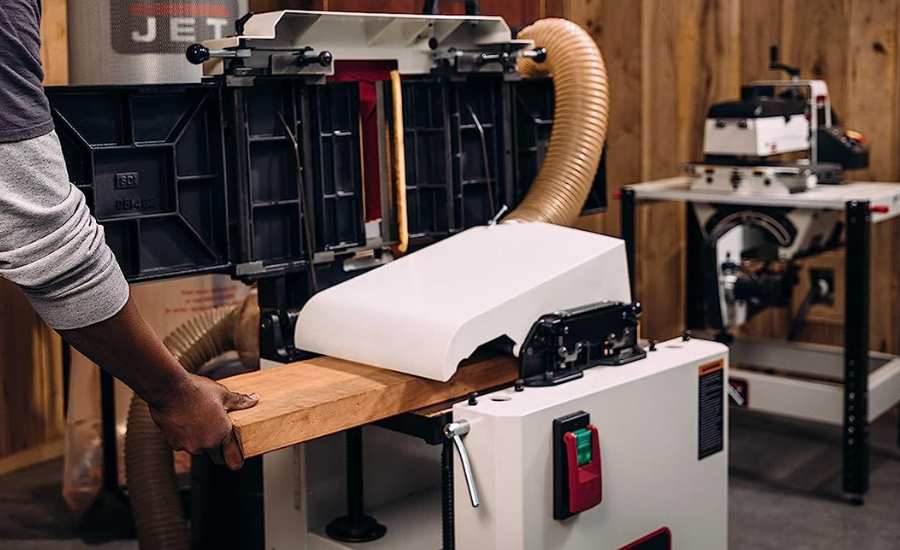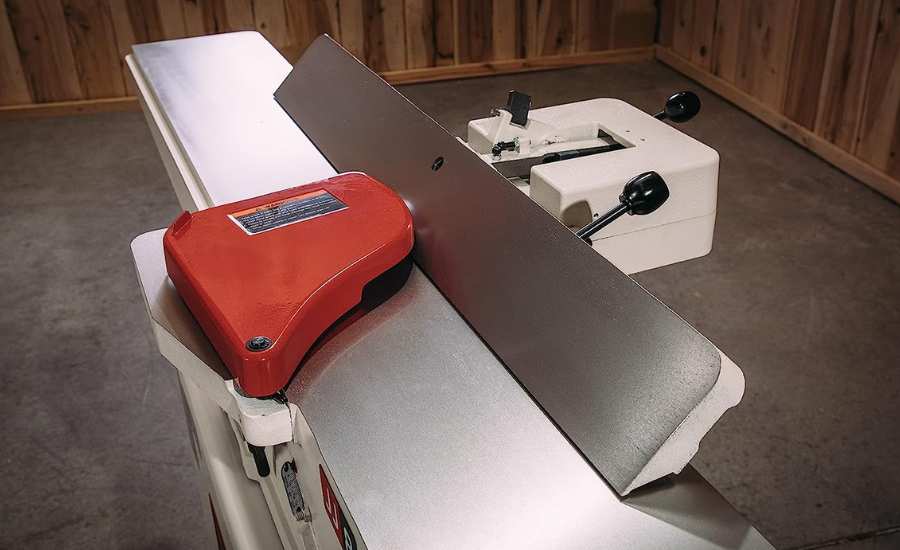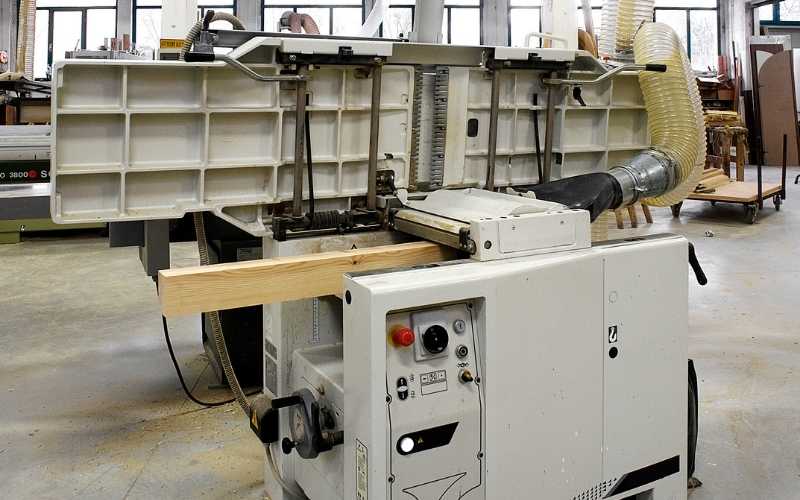A jointer planer combo machine is a combination of a wood jointer and a wood planer in one machine. If you’re thinking about getting one for use in your woodworking shop, then you should read this guide.
One of the major challenges faced by hobbyists, DIYer’s and even some professional woodworkers is a limited workshop or working space.
Many professional woodworkers usually have a dedicated workshop space for carrying out their projects.
As a result, they can afford to purchase and bring in as many tools and equipment as they need and can afford. They have all the space for these tools.
The same cannot be said for a simple hobbyist or DIYer who is just looking to make some of those never ending projects he or she discovers on Pinterest and YouTube.
As an average hobbyist, you normally make use of the leftover space in your garage where you still happen to pack your car.
This is not enough to accommodate the numerous woodworking tools you need to get your projects going. Hence, the need for machines like the jointer planer that houses two tools in one.
With it, you can carry out 2 tasks which are jointing and planing with just one machine.
Jointer planers also offer you a wide jointing capacity because the wide planer cutterhead is also acting as the jointer cutterhead. So, you have the ability to joint boards that are wider with it.
In addition, since it’s just one cutterhead in the machine for both operations, it saves you the cost and worries of maintaining two cutterheads on seperate machines.
Here in this article, I’m going to talk about whether getting these machines is even worth it, and what you must consider before getting one.
Table of Contents
Is Getting A Jointer Planer Machine Worth It?
From what I’ve said above, the advantages of getting a jointer planer is quite obvious. However, along with these advantages, they come with their own drawbacks.

Many users have noticed this and have not been silent concerning it. This you can notice from the seemingly low reviews they have in many of the online market places.
One of the major drawback is that some of them can be a little bit difficult to switch between modes i.e from planing to jointing and vice versa. Thus, increasing downtime.
Changing between modes can also cause parts of the machine to lose alignment. For instance, the jointer fence might lose it’s squareness after changing from the planing mode to the jointing mode. Then you have to adjust it all over again.
This is not to discourage you from getting it though. The point is, if you are about to get one, then you must be aware of some of the possible limitations of the machine.
It’s all a matter of personal preference and it’s totally up to you. Personally, I would rather get a separate wood jointer and a separate thickness planer machine, because I think they work more effective separately. Plus you don’t have to keep switching whenever you want to plane or joint. It’s kind of not my thing.
Nonetheless, if you are ready for all that switching modes thingy, it’s a good power tool that can really help you to optimize your workshop space, effectively helping you to kill two birds with one stone.
What To Consider When Choosing A Jointer Planer Combo Machine
If you want to choose the right combination jointer and planer machine, here’s what you must consider.

Ease of Transition
One of the first things I believe you should consider before choosing a jointer planer combo machine is how easy it is to switch the machine between the 2 modes. How easy it is to switch it from jointing to planing and from planing to jointing.
Do you need tools to loosen or take out some parts off the machine to make the conversion and fix them back again in order to transition it back? In some machines, you have to take out the fence and blade guard, lift individual tables of the jointer before you can convert it to a planer, then fix them back if you want to joint again.
Of course, that does not mean the end of the world, but I think it’s something you really need to consider when making your choice because it will determine how much time you spend adjusting it instead of working on your project.
Accuracy After Transition
Transitioning the machine from one function to the other might cause some parts to lose alignment. For instance, the jointer fence can lose its squareness after you transition it to a planer and back.
That will require you to adjust it again until it’s square with the table before using it. All this amounts to downtime and additional work.
Before making your choice, you need to do your research carefully and put this into consideration.
Size – Width Capacity
There are different sizes of jointer planer machines you can choose from. The sizes, reflected in the width capacities of the machines determines how wide a board you can joint or plane.
There are 8 inch, 10 inch, 12 inch and 16 inch combination jointer/planers available. The smaller the size you choose, the less money it will cost you. But that means you can’t work with wider boards, unless you rip them into smaller boards, and glue them up later.
Jointer Planer Combo Buyer’s Guide
The video below explains thoroughly what you should look for when shopping for a jointer/planer combo machine. So, watch it if you still have questions that need answering.
List of Jointer Planer Machines You Can Choose From
| Jointer Planer Machine | Width Capacity |
|---|---|
| Hammer A3 26 | 10 Inch |
| Hammer A3 31 | 12 Inch |
| Hammer A3 41 | 16 Inch |
| Jet JJP-8BT | 8 Inch |
| Jet JJP-10BTOS | 10 Inch |
| Jet JJP-12BHH | 12 inch |
| Grizzly Industrial G0958 | 8 Inch |
| Grizzly Industrial G0959 | 12 Inch |
| Rikon 25-010H | 10 Inch |
| Rikon 25-210H | 12 Inch |

